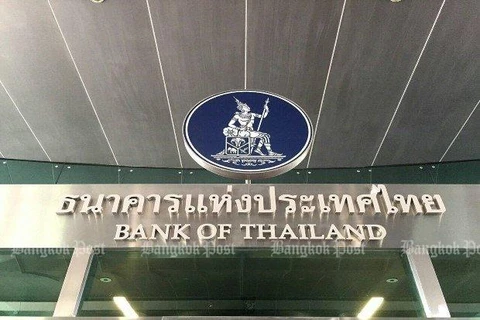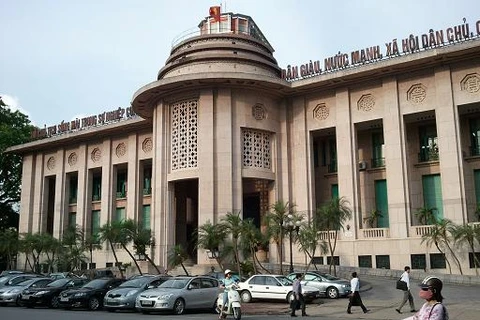Hanoi (VNA) – The State Bank of Vietnam (SBV)’s reference interest rate cut will allow credit institutions to access capital from central bank at a lower cost and stablise their own rates, according to a SBV official.
The move was prompted by recent “unfavourable” economic development, with policy makers elsewhere including the US Federal Reserve and the European Central Bank lowering rates too, said Pham Thanh Ha, head of the SBV’s Monetary Policy Department.
Central banks in many countries no longer pursue tight monetary policies, easing pressure on domestic interest rates, he said.
With a positive macroeconomic background at the moment, interest rates will basically stay steady until the end of the year due to excessive liquidity and proper credit growth, he said.
In the time ahead, the SBV will continue monitoring local macroeconomic trends and monetary market to flexibly employ monetary policy instruments, in order to control inflation, maintain macroeconomic stability and revive economic growth, he continued, saying the central bank will keep a 14-percent credit growth target for this year.
The SBV last week announced it would cut several key interest rates by 0.25 percentage points, starting from September 16, to support economic growth.
This was the first rate cut by the SBV since October 2017.
Accordingly, the annual refinancing and rediscount rates will be lowered from 6.25 percent to 6 percent, and from 4.25 percent to 4 percent, respectively.
The annual overnight electronic interbank rate and rate of loans to offset capital shortage in clearance between the central bank and domestic banks will be also cut to 7 percent.
The interest rate of bids of valuable papers through the open market operations will be reduced from 4.75 percent to 4.5 percent annually.
According to the SBV, it previously took monetary policy measures to stabilise interest rates in the context of rising interest rates in the international market, which contributed to macroeconomic stability and support growth at reasonable level.
However, it has now decided to make the new move as the global economy has become more volatile and less favourable, while central banks of many countries, including the US Federal Reserve (Fed) and the European Central Bank (ECB), have cut their key interest rates.
The cut was made in the context that in the domestic market, the macro-economy continued to be stable, inflation was under control, and the monetary and foreign exchange markets were stable, the SBV said in the statement.
Data from the General Statistics Office showed that the country’s overall inflation cooled to 2.57 percent in the first eight months of 2019, down from 3.52 percent in August 2018. The rate was the lowest for the past three years. In 2019, inflation is projected to average at 2.9 percent, buoyed by weak transport inflation due to a drop in average oil prices in the year.
The exchange rate was also nearly steady, with the US dollar listed at commercial banks to inch up by only some 10 VND for buying and 30 VND for selling against the end of 2018. The central bank’s USD/VND daily reference exchange rate also rose slightly by 1.28 percent against end-2018.
The central bank’s key rate cut is considered a reference for the market to follow. It would also be an effective measure to support liquidity for commercial banks, helping them cut input costs so as to ensure the stability of lending interest rates.
According to banking and finance expert Can Van Luc, the new rate cut will also help interest rates listed at commercial banks to cool in the context that some banks have increased their deposit rates to 8.55 percent per year./.

Forex rate forecast to remain stable till year-end
The Vietnamese dong was expected to remain broadly stable against the US dollar over the remainder of 2019 and to be slightly weaker on average over 2020, buoyed by robust foreign direct investment (FDI) inflows, dollar purchases by businesses, and a healthy foreign reserve position, experts forecast.






















